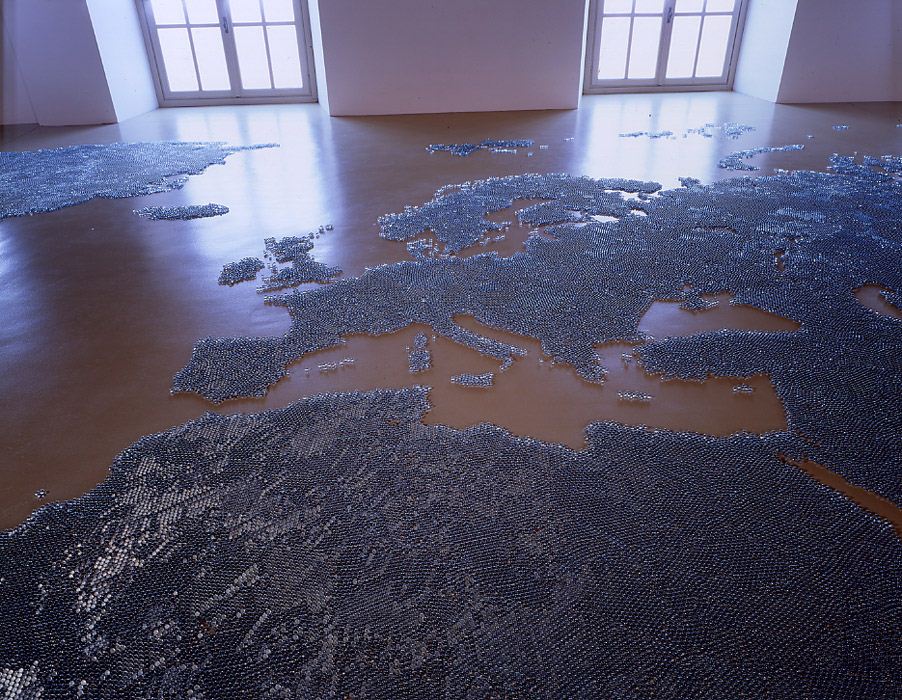Mona Hatoum

24 march 1999 - 23 may 1999
Curated by Giorgio Verzotti
Mona Hatoum (Beirut, 1952), Palestinian by birth, emigrated to Lebanon but then became an exile after the civil war broke out while she was staying in Europe. Through her works she evokes the condition of isolation that marks her existence “without a country.”
From her early performances, based on provocative actions and intended to prompt reflection on social conditioning, to her subsequent sculptures and installations, her works examine relationships between the individual and society.
The pieces in the exhibition include sculptures in various materials that, in their structure, recall domestic furnishings but contain extraneous elements. Close observation reveals that these innocuous objects have been rendered dangerous through the introduction of minor modifications: sharp wires form the base of a child’s crib, two blades replace the handles of a wheelchair, a carpet is composed of a myriad of pins and what should be a comfortable sofa is made out of rigid iron.
A disturbing element is also present in the enigmatic black cube conceived as an homage to Piero Manzoni, where the rigid minimalist structure seems to actually be made up of and covered in organic elements similar to human entrails.
Along with these pieces two works are presented that refer more explicitly to the artist’s biography: a cube formed from the union of many bars of soap, on the surface of which a series of red dots delineate the boundaries of Palestine as it would have been according to the Oslo Accords; and an enormous map of the world, where the continents are formed by a cluster of marbles arranged on the floor and destined to roll away in time with the passage of visitors, leading to an inevitable break-up of the boundaries and encouraging reflection on how geopolitical demarcations can influence the existence of human beings.
[C.O.B.]